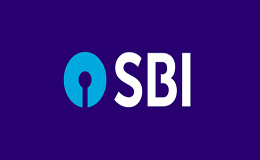Overview
Publications
Recruitment
Intranet
CIFRI Corners'
The Institute has developed protocols for scientific fisheries management in small, medium and large reservoirs in the country. CIFRI's intervention has lead to considerable improvement in fish production.
The CIFRI's intervention has lead to sustainable enhancement of fish yield in wetlands in the Eastern and North Eastern States of India through scientific stocking, conservation of fish habitat, as well as, the indigenous fish species.The current fish production level 150-250 kg/ha/yr can be enhanced to 1500-2500 kg/ha/yr from wetlands through implementation of CIFRI technologies.
The Institute has developed environmental impact assessment protocols using physico-chemical, microbiological, molecular, physiological, and community level indicators for rapid assessment of environmental perturbations caused by pollution, barrage and dam construction, river linking etc. for inland open water fisheries and ecology. The Institute also aims at ecological conservation and mitigation plans through research on environmental flow requirements, habitat rehabilitation, bioremediation etc.
The Institute has designed fish passes for dams and barrages leading to maintenance and conservation of fish species diversity upstream and downstream of the impoundment.
The Institute has developed the cage and pen culture technologies for large water bodies through meticulous research on pen/cage construction, size and shape of pen/cage, selection of fish species for the enclosure culture and economic evaluation of the technologies. This has lead to successful raising of carp fingerlings as stocking material in reservoirs and wetlands, as well as, table size production of carp and prawn through these enclosure techniques.
The Institute has prepared GIS map of water bodies having more than 0.5 ha in area throughout the country. The maps are available in Web based GIS and is widely used by managers and planners for the effective utilization of water resources and for fisheries management in the country.
Through decades of meticulous research, the Institute has generated and continues to generate time-series data on physical, chemical, biological and fish species diversity and fisheries in major rivers, reservoirs, estuaries, lakes and wetlands in the country for long-term scientific management of the resources and towards sustainable fisheries. Fisheries resources database for some of the Indian rivers are available on GIS platform.
The Institute conducted detailed research on Hilsa biology, breeding and migration through experimental tagging that led to development of regulatory regimes on fishing for sustainable Hilsa fishery.
The air-breathing fishes are distinguished by the possession of an accessory respiratory (air-breathing) organ, which enables them to exist for hours at times out of water, or indefinitely in oxygen poor waters and even in moist mud. Not only they are able to thrive in water containing low oxygen but they are also extremely hardy with respect to all other environmental parameters and are suited to shallow and derelict waters.
Along the 5,600 km coastline of India, about 1.42 ill ha of saline tract is available for development of brackishwater aquaculture. Apart from the utilisation of this vast unproductive fallow swampy land for increasing fish production, the brackishwater aquaculture entails the culture and production of prawn, a high priced commodity having universal demand for earning foreign exchange.
Waste water produced in a community is looked upon today as the residue of resources that the community has metabolised. The approach towards waste water disposal should be utilization of this residue with the concept of their reuse or recycle through an ecologically balanced system involving mainly aquaculture and agriculture.
The country had a traditional system of carp culture which depended on naturally occuring fish spawn/early fry of major carps mixed with undesirable species and was largely practiced in Bengal and, to some extent, in adjoining states. Without any basis of scientific management in the traditional system of culture, the yield varied in the range 60-600 kg/ha/yr.
The Indian and Chinese major carps,viz. catla (Catla catla), rohu (Labeo rohita), mrigal (Cirrhinus mrigala), silver carp (Hypophthalmichthys molitrix) and grass carp (Ctenopharyngodon idella) generally breed in riverine conditions. Though they show gonadal maturation upto a point in captivity in ponds, yet the final phase of maturation and ovulation/spermiation do not normally take place in pond ecosystem.
A multi-commodity farming system is more advantageous to the farmer than the monocropping system. However, commodity mix must fit into the available resources and needs as well as the economic and environmental forces around the farmer. Based on the above principles. a system of integrated fish-cum-duck farming has been developed through a number of production trials. The system not only results in more economic benefit to the farmer but also both the commodities mixed i.e., the fish and ducks are benefitted by their co-existance.
Large quantities of marketable sized brackish water fish and prawn can be harvested per unit water area by stocking with the quick growing compatible species of fish and prawn in appropriate combination and applying. Suitable kinds of fertilizers in desired quantities for the production of natural fish food organisms along with artificial feeding of fish.
Knowledge base
Facilities
Others
External links
ICAR - CIFRI










